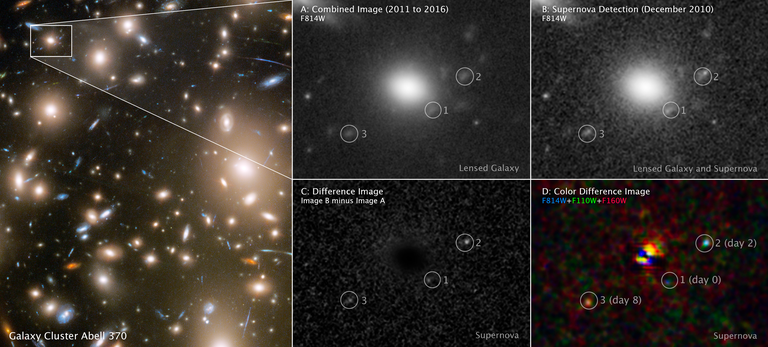A supernova of the distant universe in three times

You've obtained three images of a supernova from a distant universe, in different colors, thanks to the expansive capability of a galaxy. The discovery has been made by an international team in which Tom Broadhurst, a researcher at UPV/EHU and DIPC, participates and published in the journal Nature.
Using the gravitational field of the galaxy as a lens, they've been able to observe it much further, both in distance and in time. And in this case, moreover, they've managed to pick up how the supernova's light changed with the difference of a few days. In fact, as the supernova gas expands and cools, the emitted color changes. The higher the temperature, the bluer the light emitted, and as the temperature drops, the light emitted tends to red. Thus, the blue image reflects the state of the supernova within hours of the izar explosion, while the green and red are 2 days and 8 days after the explosion, respectively.
They've determined that the exploded star was a red supergiant with a radius 500 times greater than the Sun, and that the Earth exploded long before it was born, 11.5 billion years ago, at the very moment our galaxy was believed.
Furthermore, the results of the investigation coincide with the current assumption that the heaviest atomic elements occurred inside the stars and in supernova explosions. If these explosions had not taken place, gas from today's galaxies would only have hydrogen and helium generated at the Big Bang and would not withstand the present complex system that requires other, heavier chemical elements.
Buletina
Bidali zure helbide elektronikoa eta jaso asteroko buletina zure sarrera-ontzian











